This year marks the centenary of the Battle of the Somme, one of the bloodiest conflicts in history. The mere mention of the beautiful river north of Amiens still resonates clearly and throws up images linked to military planning and the use of young men in large numbers to achieve military success. The 60,000 casualties on the first day of the battle is still the worst day in British military history. We have outlined below seven sites on the Somme that we believe everyone should try and visit at least once.
1. Thiepval Memorial
The impressive Thiepval memorial commemorates the 1916 Anglo- French offensive on the Somme and it bears the names of 73,000 soldiers who have no known grave and who fell on the Somme. The memorial dominates the surrounding area and is over 150 feet high. It has 16 piers on whose faces the names of the Missing are inscribed. Thiepval stands on a host of tunnels and dugouts that formed part of the German second line. It is the largest British war memorial in the world and it was unveiled on 31st July 1932. When we take guests to Thiepval they search through the many cemetery registers to find their surname which almost everyone achieves due to the huge numbers of men remembered here. We always tell the story of Private William McFadzean VC winner who gave up his own life to save the lives of others when he threw himself on a box of grenades that were about to explode. McFadzean realised the danger to his comrades and his citation read “with heroic courage threw himself on top of the bombs. The bombs exploded blowing him to pieces, but only one other man was injured. He well knew his danger, being himself a bomber, but without a moments hesitation he gave his life for his comrades”.
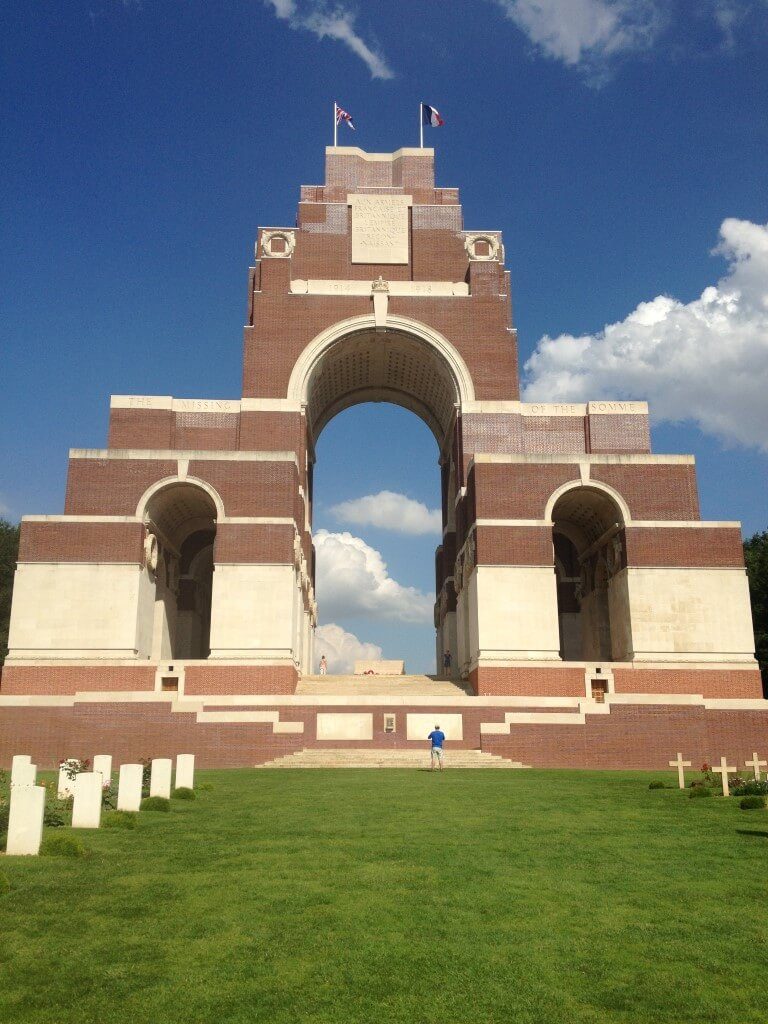
2. Newfoundland Park
Newfoundland Park was an area of France that was given to Canada, specifically Newfoundland to commemorate the soldiers of that province who died in the Somme. The park covers 84 acres and contains a number of cemeteries and memorials as well as preserved trench lines maintained in their original shape. As we walk along those trench lines it is easy to envisage the young men who did the same throughout 1916 and in the later years of the conflict. the Caribou memorial sits proudly within the park as the emblem of the Newfoundland Regiment. At Solway Tours we also love the kilted highlander of the 51st Highland Division who stands proudly on a platform of Aberdeen granite. The bronze Scotsman commemorates the action of this division taking Beaumont-Hamel and the Y Ravin on the 13th November as the Somme battle came to a bloody end. One interesting feature within the park is the “Danger Tree”. A twisted skeleton of an original trunk which marks the spot where casualties were heaviest on the 1st July. It actually took over three months for the Allies to reach their original first day target.
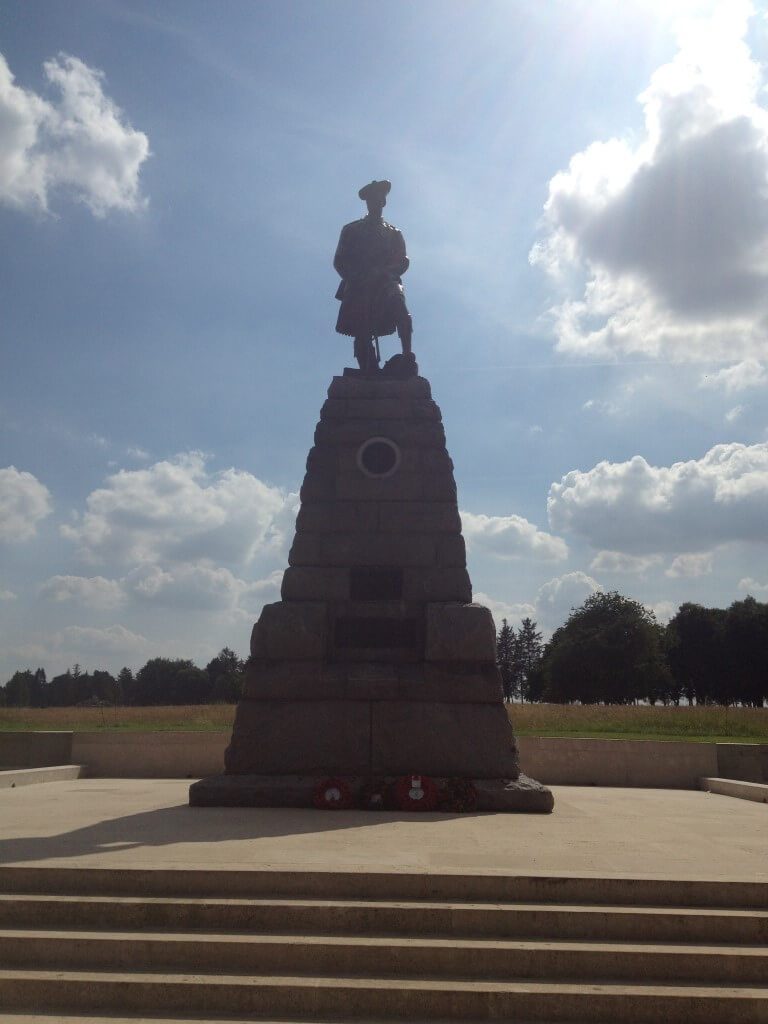
3. Vimy Ridge
When visiting Vimy Ridge you will be amazed by the story that is told by the young Canadian students who volunteer there. Like Newfoundland Park Vimy Ridge was given to the Canadians in perpetuity for their heroic efforts in supporting their British allies. When we visit we split the battlefield into two parts. We would firstly visit the poignant trench and tunnel structure which highlights just how close the front line trenches were. As this area of the Douai Plain is most famous for its coal fields and chalk it was used by both sides to tunnel and to try gain advantages over the enemy. A visit down through the tunnels is a must! The devastating weaponry used during the war is clearly evident as the craters dominate this pock marked site. The second part of the visit to Vimy Ridge is to the imposing twin pylons acknowledging the French and Canadian troops who died on this part of the battlefield. The memorial commemorates 11,285 Canadians missing in France and dominates the ridge which was successfully attacked by the Canadians on the 9th April 1917. The 250 acre park also contains a number of cemeteries and it is incredible to think that for every missing man named on the memorial there is a Canadian tree planted within the park. The most striking image at the memorial is the figure of a young female who is cloaked with her head bowed, her eyes cast down and her chin resting on one hand. This saddened figure known as Mother Canada is the national personification of the country mourning her dead.
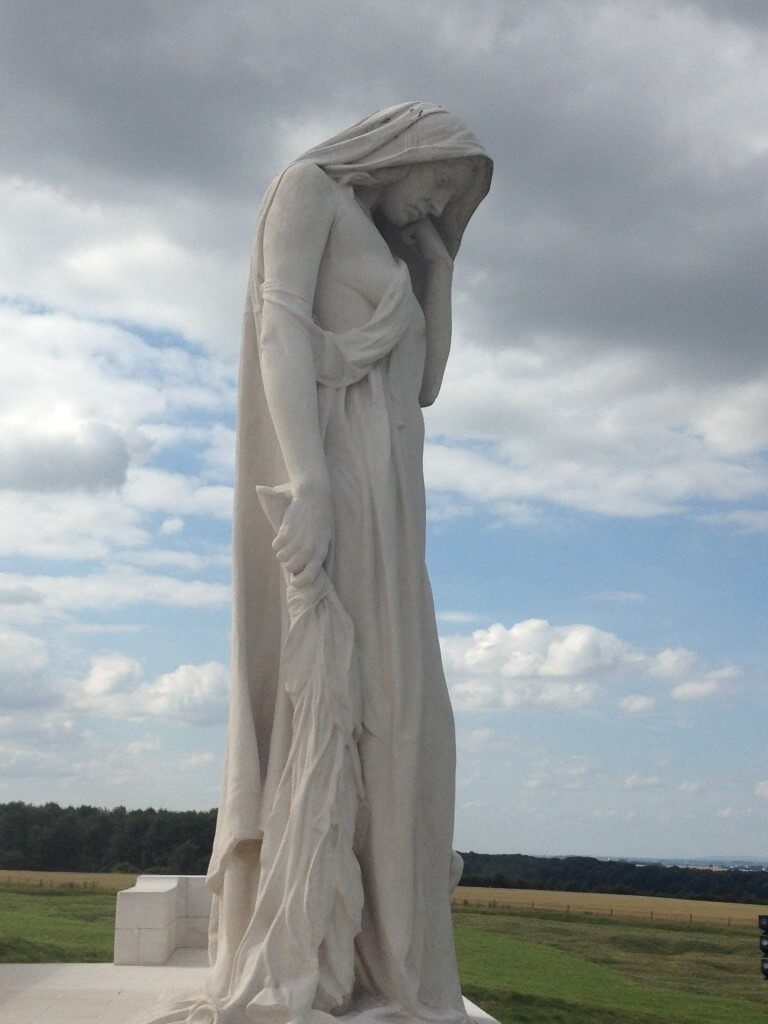
4. Lochnager Crater
This is a must visit for anyone who wants appreciate the devastation that was caused on the 1st of July, the first and bloodiest day of the Battle of the Somme. Mine warfare was being used along the Western Front and by June of 1916 the British had blown 101 mines and the Germans 126. The crater that was created at Lochnager was part of the organised offensive where the British simultaneously blew up 16 mines including this one at 7:28am on July 1st. The mine at Lochnager was dug by the 185th Tunnelling Company and once exploded the circular crater measured 300ft across and was 90ft deep. Despite the heroic efforts of the sappers the underground explosions did not have the impact hoped as the devastating skirmishes along the route of the Somme river continued for over 100 days. Every year on July 1st a service takes place with a piper playing and the crater blooms with red poppies and wooden crosses.
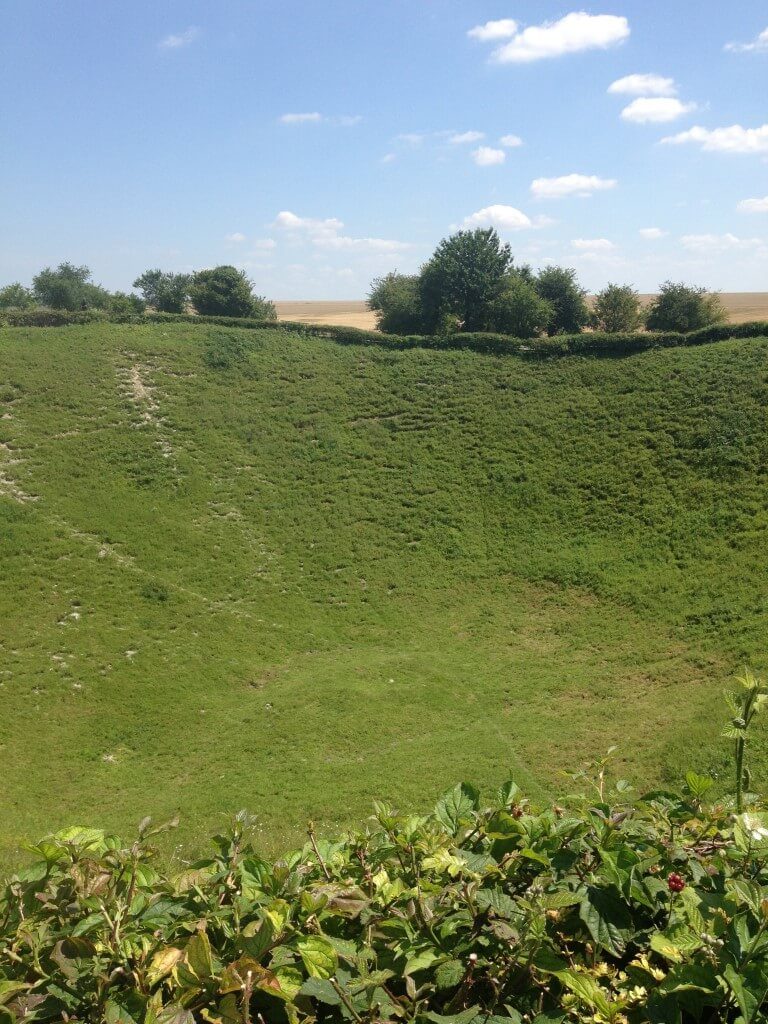
5. Hearts FC Memorial, Contalmaison
When WW1 broke out in 1914 Heart of Midlothian FC were at the top of Scottish Division 1. When it became obvious that the war would not be over quickly then the 16th Battalion Royal Scots was formed and included sportsmen with many linked to Hearts and other clubs. 16 players from Hearts and over 500 supporters joined with players and fans from other clubs.
The battalion was named after it’s charismatic Colonel, George McCrae. Three Hearts players died on the horrors of the Somme and seven did not return when the war ended.
In 1922 a memorial was unveiled at Haymarket but it Is the memorial cairn at Contelmaison above that has become a pilgrimage for sports fans all over the world to pay their respects.
The Cairn near Mametz Wood was unveiled in 2004 and its sandstone is a huge draw with the words above being the focal point. Scarves and flags from football clubs all over the world are left to commemorate the first sports battalion and the words below are inscribed on the memorial.
Come pack up your footballs and scarves of maroon.
Leave all your sweethearts in Auld Reekie toon.
Fall in wi’ the lads for they’re off and away.
To take on the bold Hun with old Geordie McCrae.
Rest in Peace, Boys
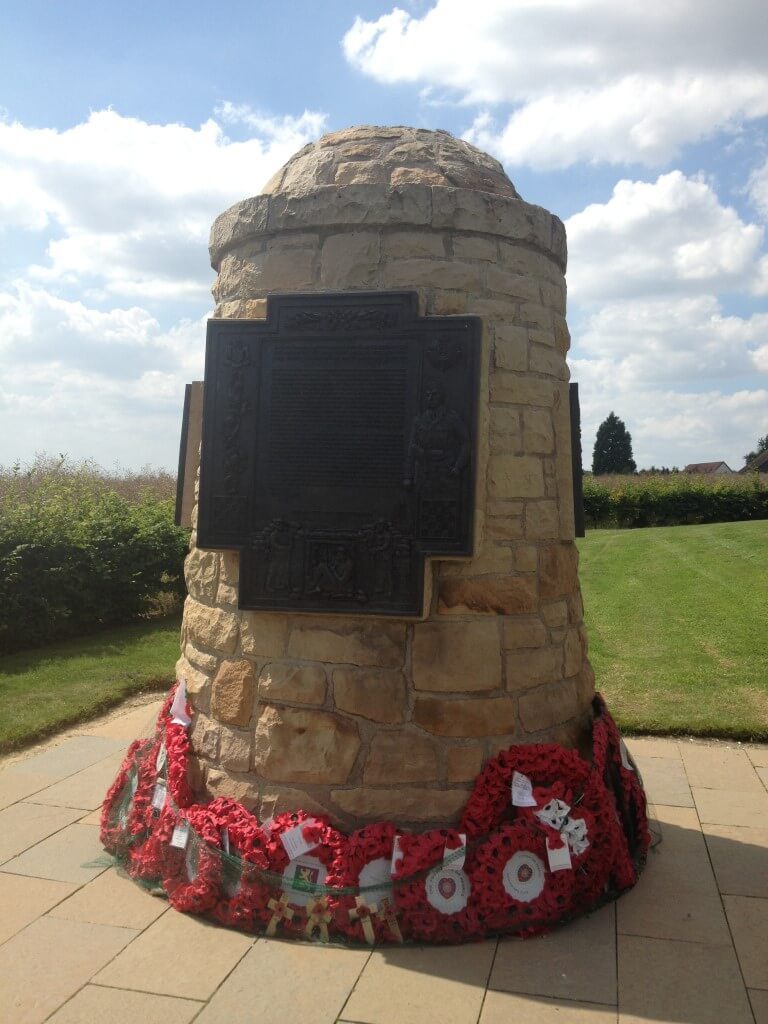
6. Tank Memorial
This memorial commemorates the first use of a tank in modern warfare. Winston Churchill as first lord of the Admiralty wanted to use a water tank as a surprise weapon to break the stalemate of the Western Front. Despite not being tested enough tanks went into action on the night of the 14th September after assembling at Trones Wood to launch their first attack. The following day at the Battle of Flers-Courcelette tanks went into action as part four of the Somme offensive. The obelisk in the picture with its four miniature tanks is a memorial to the fallen of the first Tank Corps and its fence is constructed from tank six pounder gun barrels and driving change. The obelisk is on the site where the first tanks attacked at this battle. Despite making an early impact on the German lines the tanks were not ready for concerted action and the initial breakthrough could not be followed up.
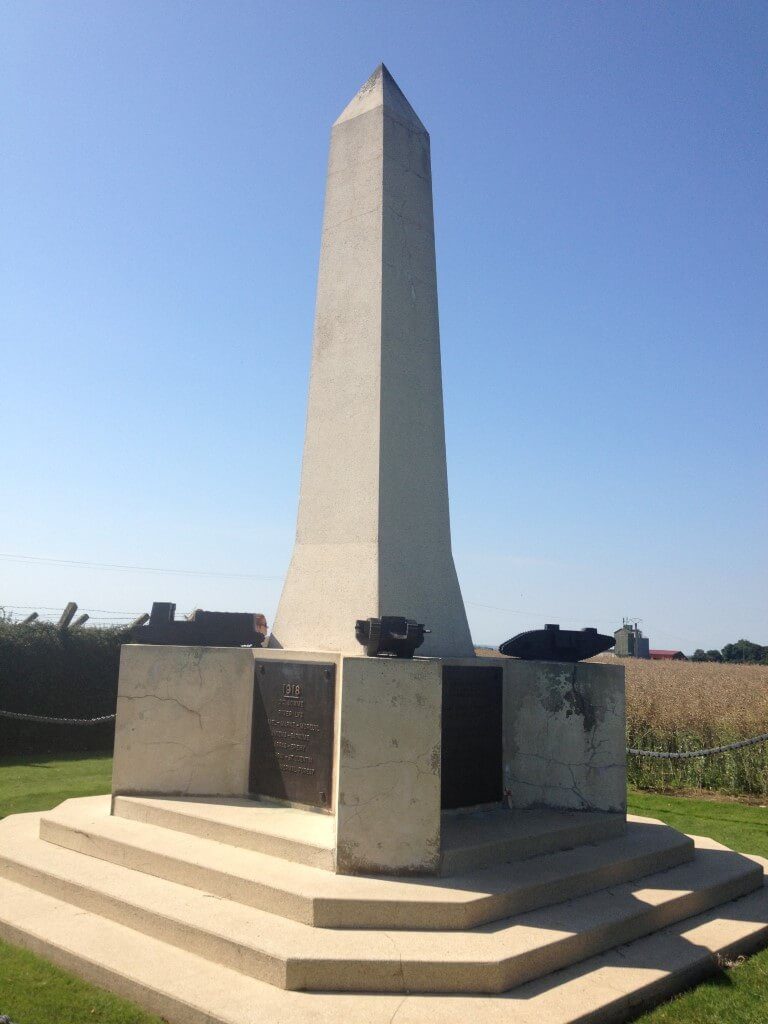
7. Albert
Albert was the base town for many British battalions and for many young men it was the last streets that they walked through. Albert was known as the “Lourdes of the North” due to the legends which grew around the five metre high Golden Madonna coated with 40,000 sheets of gold leaf which adorned the Basilica. In January 1915 persistent German shelling toppled the Golden Madonna statue to a perilous angle below the horizontal but it did not fall. As the stricken statue was visible to soldiers for miles around the British and French believed that the war would end on the day that the statue fell. British engineers climbed the steeple and shored up the statue to prevent raising false hopes. The German believed that whoever knocked down the statue could lose the war. The statue was fully repaired to it original design after the war but we make sure that all on our tour get to see the fantastic mural in the picture to highlight how the Basilica looked in 1915.
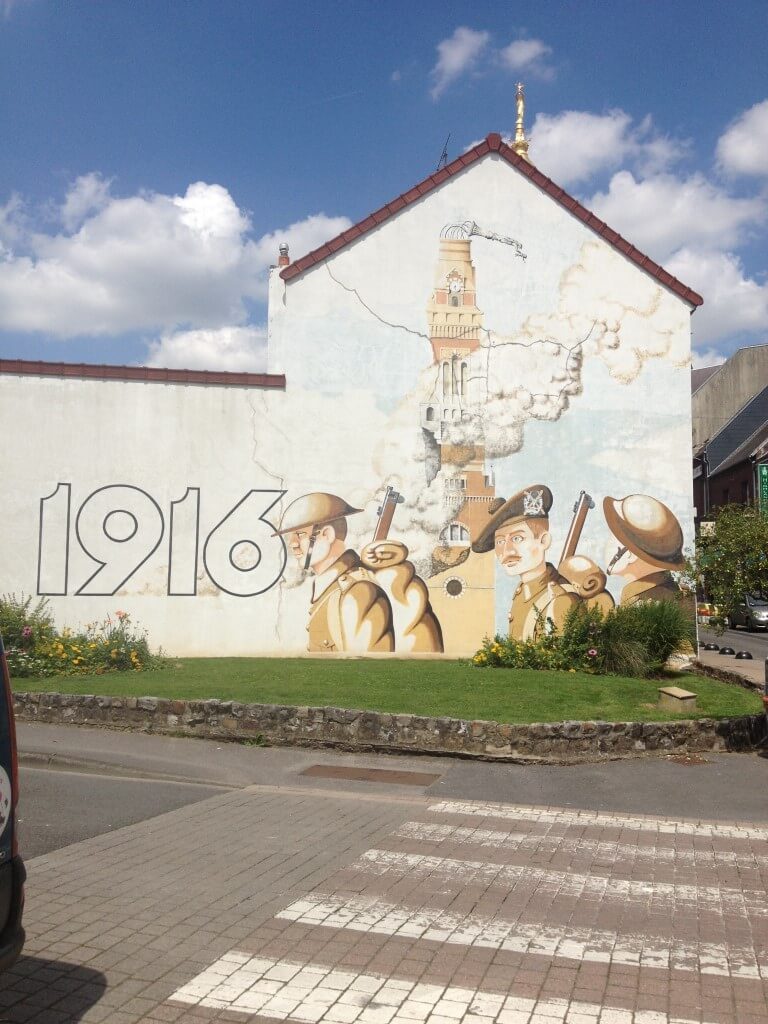
All of these sites are included in our itinerary for our fantastic four night, five day WW1 Battlefields tour on 4-8th April 2016. The deadline for booking a place on this tour is January 30th 2016. We can also run private guided battlefields tours all throughout the year. Click on the link below to find out more information.
http://solwaytours.co.uk/package/world-war-one-battlefields-tour/



